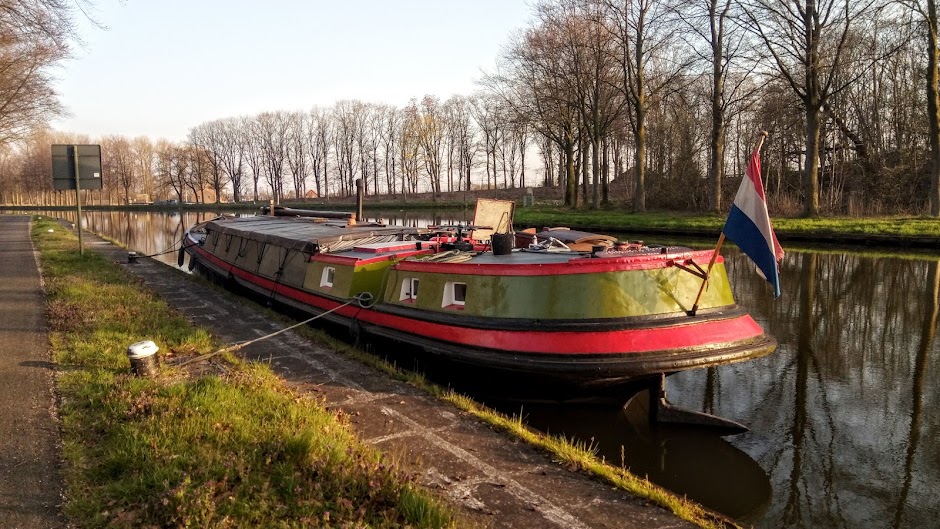
Thursday, April 28, 2022
The park that used to be on a waterway

Monday, April 18, 2022
History revealed in a forgotten lock
Saturday, April 09, 2022
A return to the fold
It seems I've missed a week here, but there was a very good reason for that. This time last week I was with my family in the UK and I have to confess blogging was the last thing on my mind. It's been three years since I've seen any of them, so it was with much eager anticipation, although slight trepidation, that I set off from the Netherlands on Wednesday, March the 28th.
Why the trepidation? Well, since March 2020 I've lived in something of an isolated bubble, only seeing my immediate family and just a few friends most of the time. My teaching has all been online, and I haven't been used to mixing with throngs of people at all, so I was a bit hesitant about being 'out there' among airport crowds and on busy trains. It seems that being a recluse comes easily to me; it's even cumulative. Not really the misanthropist I've always claimed to be, I've nevertheless had no problem with our somewhat unsocial existence for the last couple of years.
Imagine my relief, then, when the train to Schipol airport was quiet and there were empty seats in front and behind me. I was even more grateful that the airport, one of the biggest in Europe, was also very calm and relaxed. I was very quickly through security and found I had more than two hours to wait for my flight on Sleezyjet, sorry, Easyjet. With the unusual lack of bustle, a seat in an empty row was easy to find and so I settled down to read. The flight itself was far from full, so it was a comfortable hop and a skip across the Channel and I arrived at London Luton airport forty minutes later but actually earlier than I'd left, thanks to the UK time difference.
I was even through passport control in record time, much to my sister's surprise, and since there were no restrictions or checks, I ended up having to wait for her to pick me up.
It was lovely to be with her and her husband again. We had a really special few days; we walked, we talked, we went to her life drawing afternoon together and attended a presentation about the Glasgow School of artists. Then on Saturday, we drove to Lechlade-on-Thames to have a pub lunch with other members of the family: one of my brothers and his wife, and one of my sister's daughters and her boyfriend. It really felt like a return to the fold to see them all in such gorgeous Cotswold surroundings. The sun shone, the clouds did scudding things and the Thames was lined with narrowboats. Bliss!
Here are a few photos to give you a better image.
 |
| The Great Ouse runs past the end of my sister's garden. This quay is almost at the head of the navigation, something I very much wanted to see and the destination of one of our walks |
 |
| Lovely clouds and sunlight as we walked back to my sister's house |
 |
| Family: the only one missing is my brother-in-law, who'd headed home on his motorbike |
 |
| The Riverside pub at Lechlade |
 |
| Despite the chill, there were still boats out and about |
 |
| Gorgeous narrowboats moored near the pub |
 |
| The clouds were stupendous, as were the reflections |




















